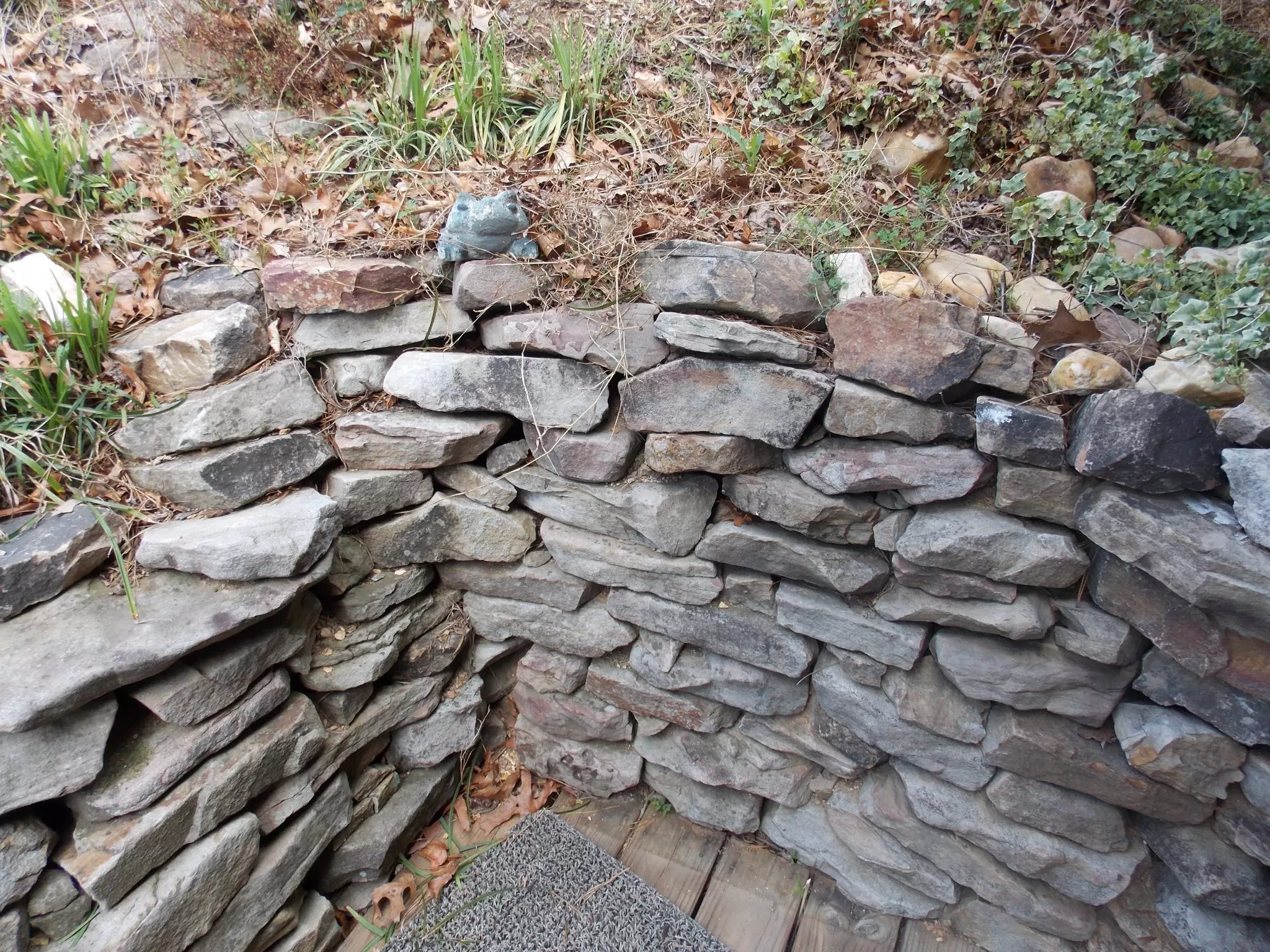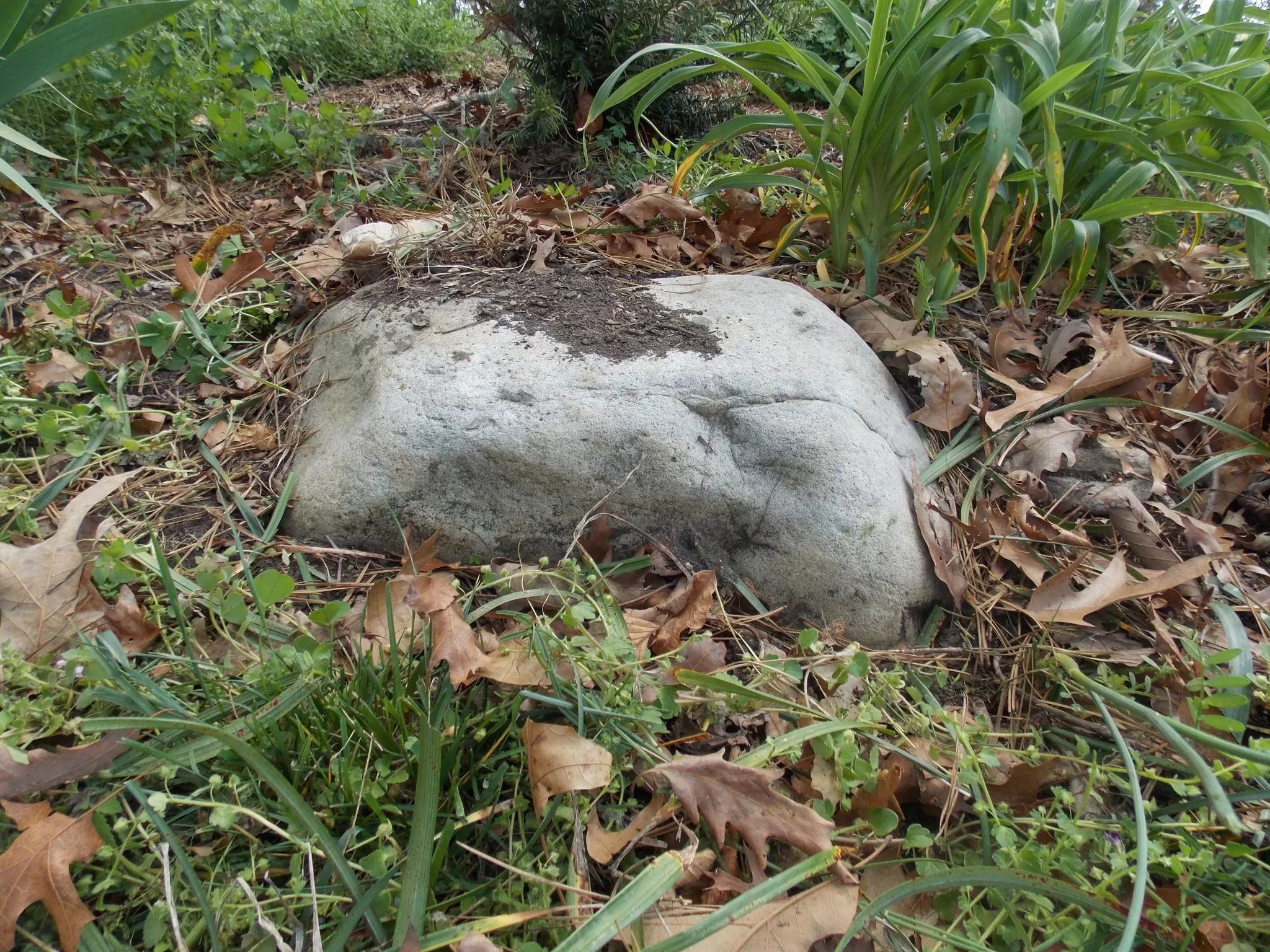Building an Arts and Crafts Wall
As we well know from reading Frank Lloyd Wright, Elbert Hubbard, Gustav Stickley and others, the Arts and Crafts philosophy applies as much to our exterior spaces as it does to our interiors. Just as we have learned to prefer native oak over imported rosewood for our interior trim, there are guidelines to help us to achieve an Arts and Crafts landscape design as well. Here are a few I have picked up along the way that apply to selecting and using rocks to define planting beds and low retaining walls:

Rocks look more natural than wood.
Before starting your project, take a look at the natural, undisturbed slopes around you. While rocky outcroppings will be abundant in most areas, what you won’t see in nature are stacks of landscape timbers and railroad ties. Wood is certainly more convenient than rocks and faster to install, it will never look as natural, as this picture illustrates.
Rocks last longer than wood.
Having torn out many ant-infested, rotting railroad ties and landscape timbers, I cannot stress enough how temporary wood is once it comes in contact with the ground. It does not matter what nasty chemicals have been injected into it, once wood is set on the ground or asked to hold back wet dirt, it starts to decay.

Choose rocks that are native to your area.
Again, study the natural outcroppings in your area, and also talk to the people who sell landscape rocks near you, for the first and most critical step in making your planting beds and retaining walls look natural is to choose rocks which are native to where you live. Pictured above is a three-foot high dry stack granite wall.

“In the ground, not on the ground.”
Rarely in nature will you see a rock or small boulder perched on top of the ground. In most cases the rock has gradually emerged from the soil or has been partially covered by water- or wind-driven leaves and dirt. Place at least 1/3 of any large rock into a hole you have dug to make it look like it has always been there (see above). The same applies to the first layer of rocks in a planting bed or retaining wall.

Dry stack looks more natural than mortar-laid.
If you are building a low wall to stabilize a slope or define a planting bed, selecting a native rock with flat surfaces will enable you to create a more natural wall without the intrusion of mortar (see two pictures higher). In addition to not looking natural, mortar cracks and crumbles, especially as rocks move and shift during the change of seasons, stress and temperatures. If you must use mortar, keep it toward the back where it is less apt to be seen (see picture above).
Leave the moss undisturbed.
When he was building the 1913 Grove Park Inn, general contractor Fred Seely instructed his stonemasons to leave “the lichens and moss on them just as they were found.” Rather than brushing them off, let them show to give the appearance the rock you just carefully selected and partially buried had been there for decades, if not centuries.

Use plants to soften a new wall.
Selecting plants that will drape or cascade down over the front of your wall, or those that can grow on a little dirt stuck between two or three rocks, is a fast way to make your new wall look both older and more natural.
Have a suggestion to add? Send it to us at our Facebook page!
Thanks,
Bruce
